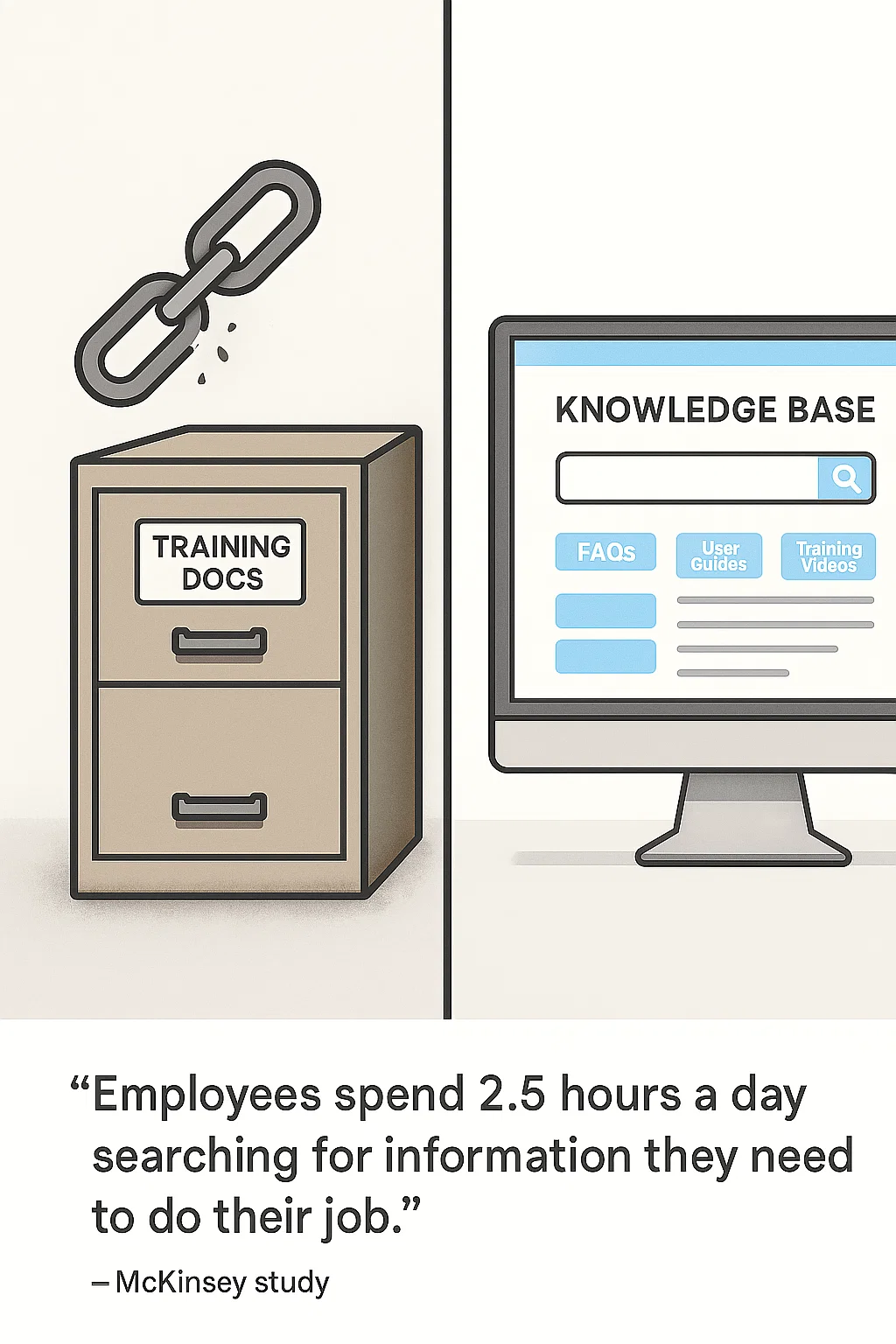If you want your employees, partners, or users to struggle, feel lost, take forever to find answers, and possibly leave — then go ahead: don’t build a structured onboarding, don’t maintain training, don’t invest in knowledge bases. But if you care about success, stick around. Because here’s how and why the things that seem optional are actually essential.
1. Because you don’t mind if people feel clueless early on
If you prefer new folks wandering around, unsure of who to ask, unsure of what tools they need, or how your product/solution works — then skip onboarding. No role expectations, no clarity, no mentorship.
Why this “doesn’t work”
- New hires become productive much more slowly when onboarding is sloppy. Studies show that companies with strong onboarding get new hires up to speed weeks faster.
- Conversely, ambiguous expectations lead to frustration, low confidence, and may push people out early.
Don’t do this if you want: clarity, speed, and early wins — things that help people stick around and deliver.
2. Because who needs consistency across your teams/partners/end-users?
If you like when every team invents its own way (or doesn’t know the “official” way), when partners tell customers one thing and internal folks something else — then yes, skip structured training.
Why it fails:
- Consistent training means consistent messaging. That builds trust. Inconsistent or “tribal” knowledge creates confusion internally and externally.
- Culture and process alignment suffer: one team thinks “this is how we do X,” another team does something entirely different. Mistakes, redundant work, inefficiencies multiply.
What data says: Structured onboarding improves productivity (employees can rely on documented, shared knowledge), reduces errors, ensures better collaboration.

3. Because up-to-date resources are overrated
If you enjoy having outdated documentation, broken wiki links, resources no one updates, and people reinventing wheels — then yes, do not invest in knowledge bases or ongoing training/upskilling.
Why that “doesn’t work”:
- When documentation is stale, people waste time verifying whether it’s correct, or worse, follow the wrong info and create bigger problems.
- Users (internal or external) expect consistency and speed. If self-service resources are wrong or missing, the frustration mounts.
Evidence:
- Research shows knowledge systems, when well-organized, improve support metrics — better First Contact Resolution, shorter handle times.
- Studies of knowledge management show a positive impact on job satisfaction and organizational performance when learning and communication channels are strong.
4. Because you don’t care about how expensive turnover is
If you’re OK with hiring, rehiring, dealing with absenteeism, losing people to competitors — then fine, don’t invest in onboarding or upskilling.
But here’s why that’s dangerous:
- Effective onboarding drives retention. One stat: companies with structured onboarding see up to 50-80% higher retention compared to those without.
- Replacing an employee costs time, money, lost productivity—not just the direct hiring costs, but the ramp time for a new hire.
5. Because customers don’t really care whether your teams know their stuff
If you think a little stumbled response, or delayed answer, or mismatched solution won’t matter — (spoiler) it does.
Why this “doesn’t work”:
- The customer/end-user sees and feels it: inconsistency, slowness, wrong answers hit their bottom line or satisfaction.
- When people on the frontlines (partners, support, etc.) don’t have access to current materials or upskilled knowledge, customers suffer.
Supporting points:
- Customers prefer self-service when answers are available and accurate. When they’re not, frustration grows.
- Knowledge management maturity correlates with higher customer satisfaction.
So What Should You Do Instead?
Here are some actionable steps, so you can not fall into those “doesn’t work” traps:
- Plan onboarding intentionally
- Define what “success” looks like for new hires/partners/end-users at 30, 60, 90 days.
- Include clear role expectations, tools/resources, mentors or “buddies.”
- Build & maintain a knowledge base
- Ensure your documentation is easy to search, up to date, with ownership (someone owns each document’s updating).
- Use feedback loops: what questions are people asking? Which docs are viewed or flagged?
- Make training continuous, not one-and-done
- Regular refreshers, upskilling as product/features evolve.
- Use varied formats: video, hands-on labs / role plays / sandboxed environments.
- Measure & iterate
- Track metrics like time to proficiency, retention, satisfaction (internal and customer), support ticket metrics (e.g., AHT, FCR)
- Use those to find bottlenecks (where people get stuck) and gaps in knowledge.
- Culture matters
- Encourage knowledge sharing; reward updating docs, mentoring newcomers.
- Make transparency and communication part of your everyday work: less “I don’t know where to look” moments.
If your goal is to have teams that fumble, partners who are unsure, users who don’t trust what they read, and high turnover — then yes, skip onboarding and training. But for those who want growth, scale, consistency, customer satisfaction, and a workplace that people stick around for — investing in structured onboarding + ongoing training + a solid knowledge base isn’t overhead. It's a core strategy.
.png)

